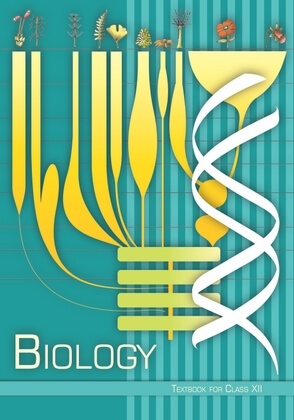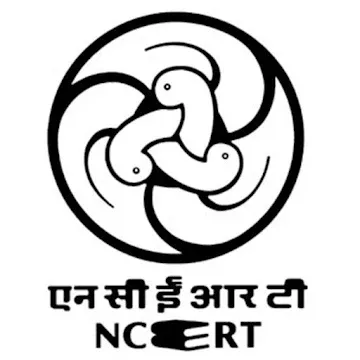NCERT Solutions Class 12 Biology Chapter 2 – Sexual Reproduction in Flowering Plants

Q1. Name the parts of an angiosperm flower in which development of male and female gametophyte take place.
The development of male and female gametophytes in an angiosperm flower takes place in the following parts:
- Male gametophyte: The stamen, specifically inside the microsporangium of the anther.
- Female gametophyte: The pistil, specifically within the ovule, which contains the embryo sac.
Q2. Differentiate between Microsporogenesis and Megasporogenesis. Which type of cell division occurs during these events? Name the structures formed at the end of these two events.
Microsporogenesis involves the formation of microspores from a pollen mother cell (PMC) through meiosis. It results in the formation of the microspore tetrad.
Megasporogenesis is the formation of megaspores from the megaspore mother cell, also involving meiotic division. It leads to the formation of four megaspores, of which only one is functional.
Type of cell division: Meiosis occurs during both these events.
Structures formed: The end structures are microspore tetrads in microsporogenesis and megaspores in megasporogenesis.
Q3. Arrange the following terms in the correct developmental sequence: Pollen grain, sporogenous tissue, microspore tetrad, pollen mother cell, male gametes.
The correct developmental sequence is:
- Sporogenous tissue
- Pollen mother cell
- Microspore tetrad
- Pollen grain
- Male gametes
Q4. With a neat, labelled diagram, describe the parts of a typical angiosperm ovule.
A typical angiosperm ovule consists of the following parts:
- Funicle: The stalk that attaches the ovule to the placenta.
- Hilum: The junction between the ovule and the funicle.
- Integuments: Protective envelopes surrounding the ovule, leaving an opening called the micropyle.
- Micropyle: A small opening at the tip of the ovule through which pollen tube enters.
- Chalaza: The basal part of the ovule, opposite the micropylar end.
- Nucellus: A mass of cells with abundant reserve food materials, inside which the embryo sac is located.
- Embryo Sac: The female gametophyte developing from a megaspore. It is generally formed from a single megaspore mother cell (MMC).
Q5. What is meant by monosporic development of female gametophyte?
Monosporic development of female gametophyte refers to the process where a single functional megaspore develops into the female gametophyte or embryo sac. In most flowering plants, one of the four megaspores produced during megasporogenesis remains functional, while the other three degenerate. This single functional megaspore undergoes mitotic divisions to form the mature embryo sac, which is 7-celled and 8-nucleate.
Q6. With a neat diagram explain the 7-celled, 8-nucleate nature of the female gametophyte.
The female gametophyte is a 7-celled, 8-nucleate structure. During its development, one of the four megaspores becomes functional and forms the female gametophyte or embryo sac. It undergoes three mitotic divisions to first form two nucleate, then four nucleate, and ultimately eight nucleate stages. However, only six of these eight nuclei are surrounded by cell walls and form cells. These cells are grouped as:
- Egg Apparatus (3 cells):
- 1 egg cell: important for fertilization.
- 2 synergids: have filiform apparatus guiding pollen tubes.
- Antipodal cells (3 cells):
- Positioned at the chalazal end.
- Central Cell (1 cell, 2 nuclei):
- Contains 2 polar nuclei.
Thus, the embryo sac is termed 7-celled and 8-nucleate due to the arrangement of cells and nuclei.
Q7. What are chasmogamous flowers? Can cross-pollination occur in cleistogamous flowers? Give reasons for your answer.
Chasmogamous flowers are those that open and expose the anthers and stigma, allowing for potential cross-pollination.
In contrast, cleistogamous flowers do not open and therefore undergo self-pollination as external pollen cannot reach the stigma. As a result, cross-pollination cannot occur in cleistogamous flowers since they remain closed and the anthers directly contact the stigma within the same flower, ensuring self-pollination. This adaptation ensures seed production regardless of pollinators, being advantageous in environments where pollinators are scarce.
Q8. Mention two strategies evolved to prevent self-pollination in flowers.
Two strategies evolved to prevent self-pollination in flowers are:
- Temporal Separation: In some species, pollen release and stigma receptivity are not synchronized. Either the pollen is released before the stigma becomes receptive or the stigma becomes receptive long before the release of pollen.
- Spatial Separation/Structural Mechanism: In certain species, the anther and stigma are situated at different positions so that the pollen cannot come in contact with the stigma of the same flower, preventing autogamy.
Q9. What is self-incompatibility? Why does self-pollination not lead to seed formation in self-incompatible species?
Self-incompatibility is a genetic mechanism that prevents self-pollen (from the same flower or other flowers of the same plant) from fertilizing the ovules. This occurs by inhibiting pollen germination or pollen tube growth in the pistil.
Reasons self-pollination does not lead to seed formation in self-incompatible species:
- Recognition and rejection: The pistil recognizes self-pollen and prevents it from germinating.
- Inhibition: Pollen tubes from self-pollen fail to grow towards the ovules.
- Prevention of fertilization: Without pollen tube growth, self-pollen cannot reach the ovules for fertilization, thereby inhibiting seed formation.
Q10. What is bagging technique? How is it useful in a plant breeding programme?
The bagging technique is a method used in plant breeding to prevent contamination of a flower's stigma with unwanted pollen. It involves covering the emasculated flowers with a bag, usually made of butter paper, to ensure that only desired pollen grains are used for pollination.
The steps are as follows:
- Emasculation is performed by removing the anthers from the flower bud before they dehisce.
- The emasculated flower is then covered with a bag to prevent contamination.
- Once the stigma is receptive, desired pollen is applied, and the flower is rebagged to protect it.
This technique is crucial for ensuring controlled pollination and obtaining pure-line hybrids.
Q11. What is triple fusion? Where and how does it take place? Name the nuclei involved in triple fusion.
Triple fusion is the process that occurs in the embryo sac of flowering plants, where one of the male gametes fuses with the two polar nuclei in the central cell to form a triploid primary endosperm nucleus (PEN). This takes place after the pollen tube enters one of the synergids and releases two male gametes, one of which participates in this fusion. The nuclei involved in triple fusion are one male gamete nucleus and two polar nuclei. The resulting triploid cell develops into the endosperm, which provides nutrition to the developing embryo.
Q12. Why do you think the zygote is dormant for sometime in a fertilised ovule?
The zygote is dormant for some time in a fertilised ovule to ensure that a sufficient amount of endosperm is formed before it begins to divide. This dormancy is an adaptation to provide assured nutrition to the developing embryo, as endosperm development precedes embryo development, providing necessary nutrients.
13. Differentiate between:
a) hypocotyl and epicotyl;
- Hypocotyl and Epicotyl are parts of the embryonal axis of a dicotyledonous embryo.
- Hypocotyl: It is the cylindrical portion below the level of cotyledons and terminates at its lower end in the radicle or root tip.
- Epicotyl: It is the portion above the level of the cotyledons and terminates with the plumule or stem tip.
b) coleoptile and coleorrhiza;
Coleoptile and Coleorrhiza are structures associated with monocotyledonous seeds. Here is a brief differentiation:
- Coleoptile:
- It is a protective sheath covering the emerging shoot or plumule in monocots, such as grasses.
- It helps in pushing through the soil as the seed germinates.
- The tip of the coleoptile often becomes photosynthetic after emergence.
- Coleorrhiza:
- It is a protective sheath that covers the radicle (embryonic root) and the root cap in monocots.
- It facilitates the initial penetration into the soil by the radicle.
- It serves as a protective barrier as the radicle begins to grow.
Both structures serve protective roles during germination, but they guard different parts of the seedling in monocot seeds.
c) integument and testa;
Integument and testa are differentiated as follows:
- Integument: These are protective envelopes that encircle the nucellus of an ovule except at the tip where a small opening called the micropyle is organized.
- Testa: This is the hardened seed coat that forms from the integument(s) as the seed matures. The testa provides protection to the young embryo and is the outer layer of a seed.
d) perisperm and pericarp.
Perisperm:
- Derived from the nucellus of the ovule.
- Acts as storage tissue.
- Remains outside the embryo sac.
- Example: Found in seeds like black pepper.
Pericarp:
- Derived from the ovary wall after fertilization.
- Protects the seeds and aids in seed dispersal.
- Comprises three layers: epicarp, mesocarp, and endocarp.
- Example: Found in fruits like mangoes and oranges.
Q14. Why is apple called a false fruit? Which part(s) of the flower forms the fruit?
Apple is called a false fruit because it develops from the thalamus, a part other than the ovary. In true fruits, only the ovary contributes to fruit formation.
Q15. What is meant by emasculation? When and why does a plant breeder employ this technique?
Emasculation is the removal of anthers from the flower bud before they dehisce using a pair of forceps. This step is necessary to prevent self-pollination.
When and why: Emasculation is employed by plant breeders when the female parent bears bisexual flowers. This technique is used to ensure that only the desired pollen grains are used for pollination, preventing contamination from unwanted pollen. It is an essential part of artificial hybridisation in crop improvement programs to produce specific hybrids.
Q16. If one can induce parthenocarpy through the application of growth substances, which fruits would you select to induce parthenocarpy and why?
To induce parthenocarpy through the application of growth substances, it would be beneficial to select fruits that are commonly consumed and have economic importance. Fruits to consider include:
- Banana: Already known for being seedless due to parthenocarpy, further induction could enhance fruit quality and yield.
- Grapes: Encouraged for seedless variants to increase table grape appeal.
- Oranges and other Citrus fruits: Seedless varieties are highly preferred in fresh consumption markets.
- Tomatoes: Seedless tomatoes can lead to products with better texture and consumer preference.
- Cucumbers: Seedless cucumbers are desirable for certain culinary uses.
These fruits are selected due to their consumer demand, potential market value, and ease of handling without seeds.
Q17. Explain the role of tapetum in the formation of pollen-grain wall.
Tapetum plays a crucial role in the formation of the pollen-grain wall. The tapetum is the innermost wall layer of the anther's microsporangium. It nourishes developing pollen grains. The tapetal cells possess dense cytoplasm and generally have more than one nucleus, which possibly aids in supplying nutrients and materials necessary for the pollen grain wall development. The hard outer layer of the pollen grain, the exine, is composed of sporopollenin, which these cells likely contribute to forming. This composition makes the exine highly resistant to various environmental factors, ensuring the pollen grain's durability and preservation as fossils.
Q18. What is apomixis and what is its importance?
Apomixis is a form of asexual reproduction that mimics sexual reproduction, occurring in some flowering plants like Asteraceae and grasses.
Its significance lies in:
- Seeds: Allows the production of seeds without fertilization.
- Genetic Stability: Ensures the propagation of hybrid traits without genetic segregation, beneficial in hybrid crop production.
- Cost-Effectiveness: Reduces the need to produce hybrid seeds annually, cutting costs for farmers.
- Cloning: Apomictic embryos can be considered genetic clones of the parent.
The understanding of apomixis is actively studied to potentially enhance agricultural productivity.

